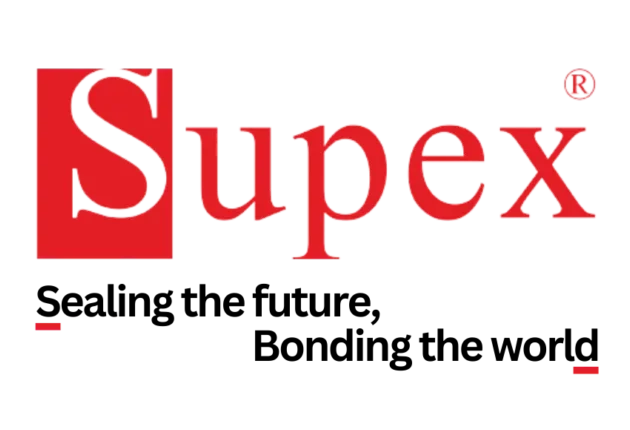Factors to consider while choosing concrete sealer
Concrete sealer and using right Joint sealants can be simplified as below, consider the following:
- Gap between the joints in mm
- Flexibility of the joint depending upon if it is subjected to expansion/ contraction
- Exposure to external environment . Viz
Sunlight – is it UV resistant - Chemical resistance exposure to corrosive chemicals, acids, fuels etc
- Temperature to be sustained by the assembly
- Expected life of the joint sometimes sealants are used temporarily to hold parts together
- Paintability – can it painted over
- Cost/ Price of the product and application
- Ease of application
Types Of Concrete Joint Sealer
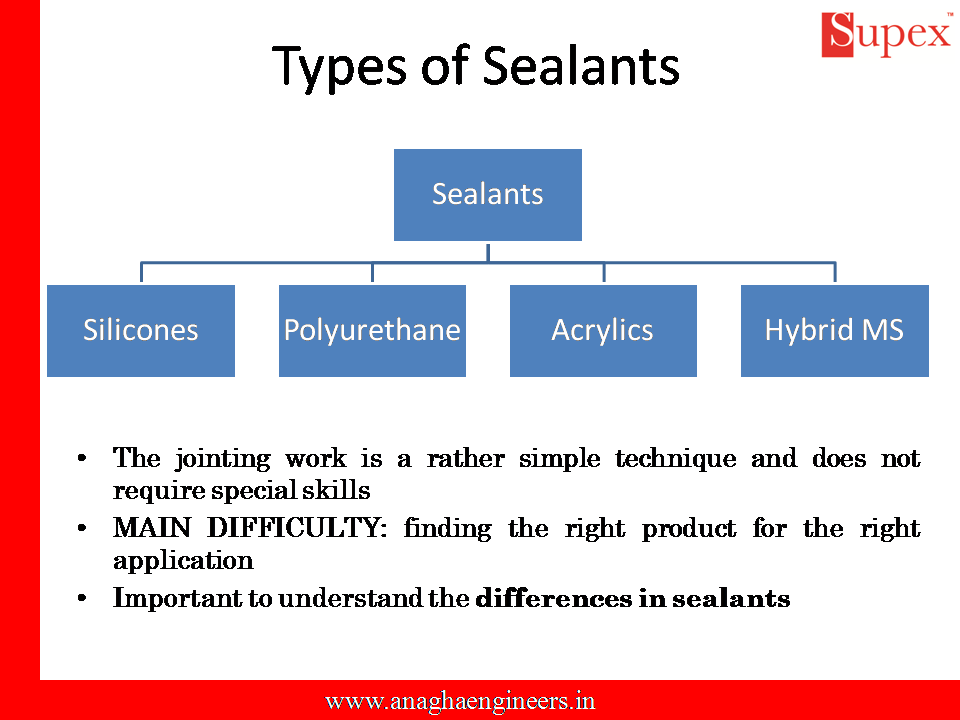
Concrete sealer sealing with RTV Silicones
It is the most popular type of concrete sealert used. The silicone rtv variant checks all the boxes for the factors required when it comes to choosing a sealant. It is seen to be extensively used in manufacturing, maintenance, construction, interiors and in any sealing application.
Advantages of Industrial Silicone RTV sealants
- UV stability.
- Color stability.
- Adhesion to variety of construction surfaces.
- Exceptional high movement accommodation.
- Extreme temperature resistance.
- High workability.
Silicone sealants are further classified based on their curing systems
![]()
Acetoxy Silicone sealants
- Acetoxy Silicone sealants-Most popular & used extensively due to lower price.
- Disadvantages not sensor safe, corrosive due to acetic acid vapours released during curing, cannot be painted over, strong smell.
- Uses of acetoxy silicone sealants Gap-filling, high temperature (300°C) sealing, any general-purpose sealing/bonding application.
Range of Acetoxy silicone sealants from Supex
- Supex 200GP – 260 ml
- Supex 280 Silicone
Colours available for concrete sealing- Clear, White and black
Neutral cure silicone sealants
Neutral silicone sealants are higher grade Silicone sealants used for technical and critical applications.
- Applications Flange sealing in Automobiles, manufacturing, Plant maintenance, Food and Pharma plants for general bonding/sealing, External window gap sealing, Glass Bonding, glazing , weather sealing.
Neutral plus silicone sealants from Supex:
- Supex Neutral plus, 270 ml
- Supex WP+
- Supex High temp RTV flange sealant


Polyurethane Sealants/ PU Sealants
Characteristics of PU sealants
High gap filling, high bonding strength, flexibility , chemical resistance, weatherability, can be painted over.
Uses/ applications of PU sealants
- Construction Expansion Joint sealing, internal joint sealing ( Eg: isolation joints)
- Windscreen Bonding most popular application for PU sealants used in Automobiles, Railways. Glass to metal bonding.
- Automotive industry for Bonding Panels in Bus body building, high vibration resistance ( sound deadening sealant), high bonding strength, flexible bonding,
- General Manufacturing HAVC, Elevators, escalators – sheet metal bonding, panel bonding, general high strength flexible bonding
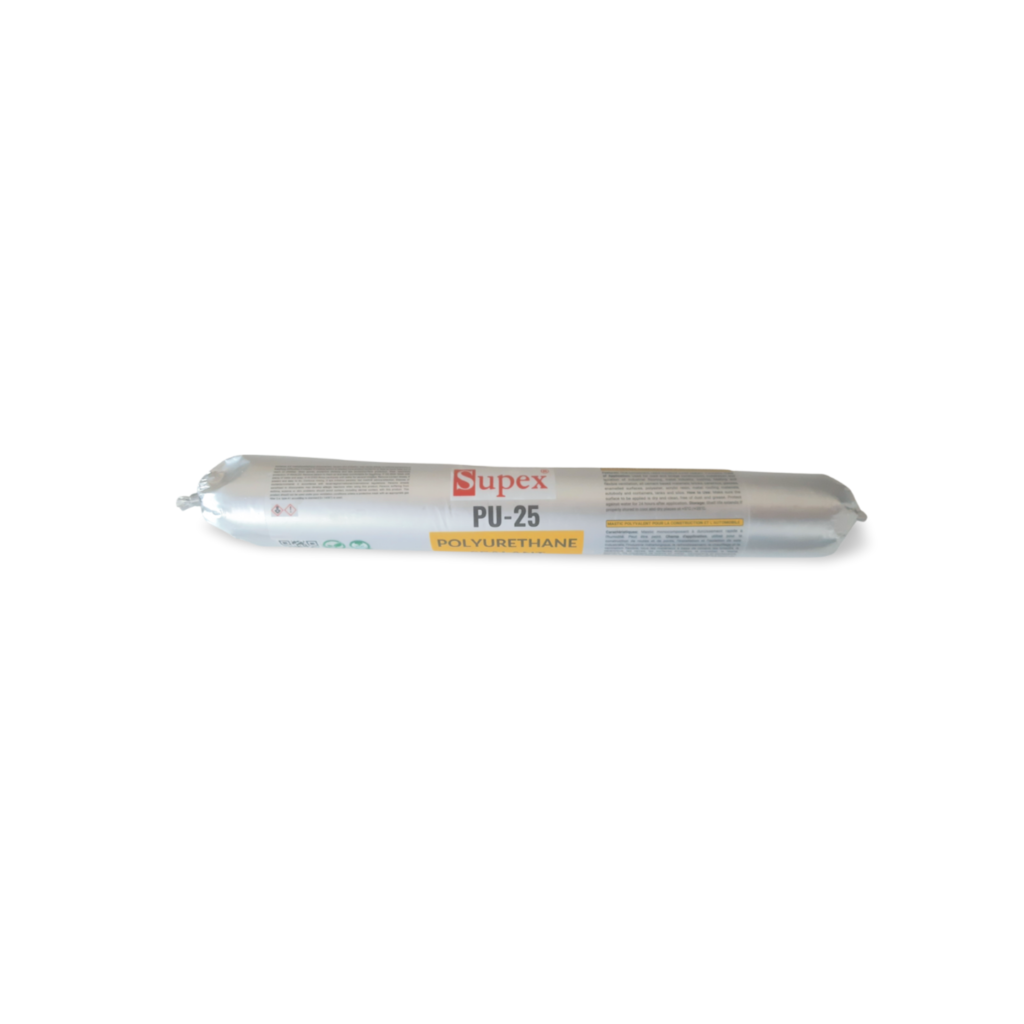
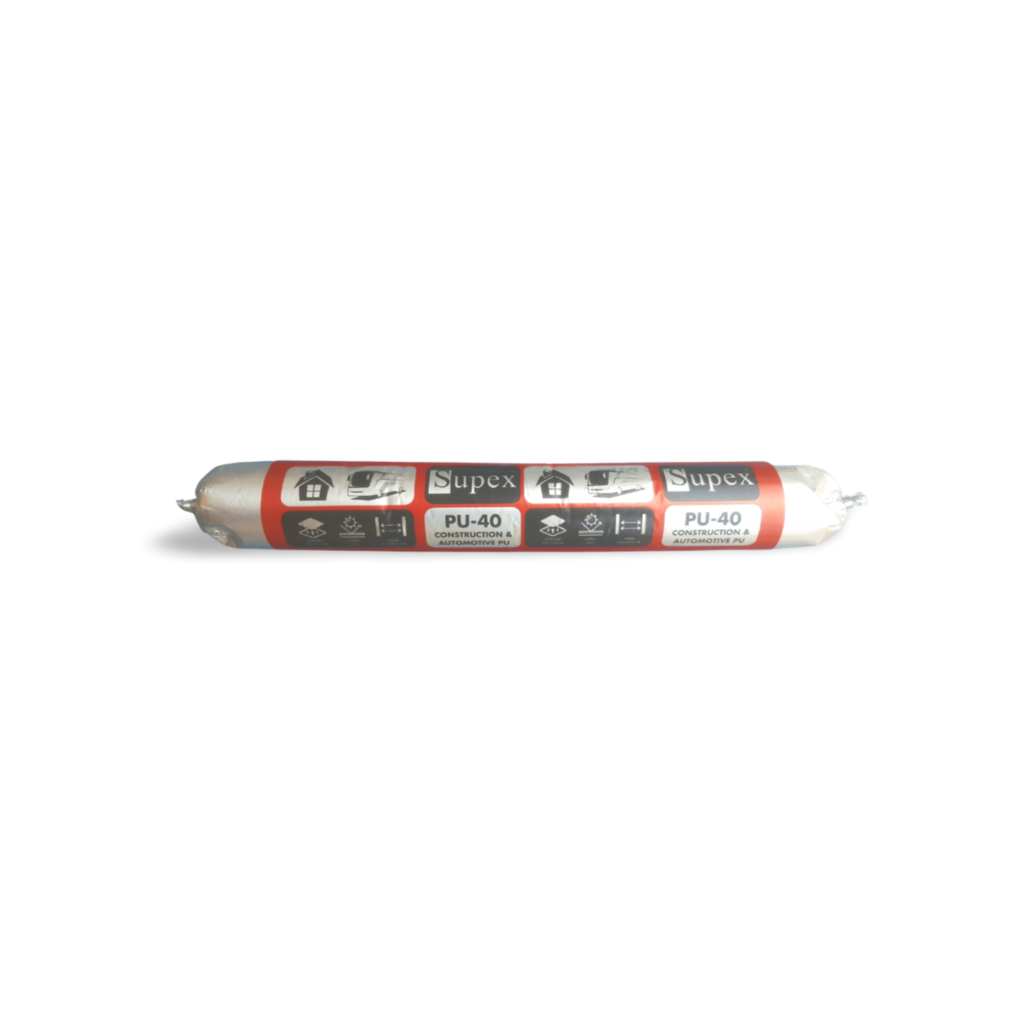
Acrylic Sealants
What is an acrylic sealant?
Paintable acrylic sealant is a multipurpose non-sag paintable Acrylic sealant. On exposure to atmosphere, acrylic sealant forms a durable elastomeric compound. A Green Building Product with Zero Percent VOC. It is a universal, one-component plasto-elastic acrylic adhesive sealant, curing by evaporation of water from the mass.
BENEFITS of Acrylic Sealants
- Odorless and chemically neutral
- possibility of painting and grinding after curing
- possibility of applying multiple layers after curing
- exterior and interior applications
Uses of acrylic sealants
Paintablle Acrylic sealant, SUPEX 500 bonds well to a wide variety of substrates and are suitable for making permanent elastic seals of high adhesive strength. This acrylic Water based sealant is paintable, flexible. Acrylic sealant’s price is lesser than GP silicones.
- Gap of UPVC, PVC Joints.
- HVAC Duct sealing
- External and internal crack filler
- Walls and ceilings.
- skirting boards
- Concrete Expansion joints.
- Concrete, Granite Joints.
- Wood, Concrete, Granite,
- Aluminum, G I Sheet, M. S. Panel,
- Machinery Surface, Tiles , Coating,
- POP, U.B. Coat.
Hybrid MS Polymer sealant
What is MS polymer adhesive and sealant?
MS polymer Sealants are highly elastic, high strength sealant. It has excellent adhesion to non-porous surfaces, will bond to damp surfaces and is paintable with most paints. Hybrid sealants are claimed to combine the strength of polyurethanes with the weathering resistance of silicones. In addition to their high performance properties, these sealants are achieving popularity due to their solvent-free and isocyanate-free nature and due to their formulation versatility that allows the customization of viscosity and early strength development for various applications.
- High bonding strength, instant bonding, low gap fill. Primarily used as a bonding agent than for sealing applications.
- Examples: Mirror Bonding, Panel Bonding, Cladding etc.
Benefits of MS polymer sealants
- High initial tack properties reduce the need for initial support.
- Easy to apply and easy to tool and finish
- Remains elastic after curing.
- No odor.
- Does not contain neither isocyanates, silicones nor solvents.
- Paintable with all water-based paints.
- Excellent color stability. Likewise, weather and UV resistance.
- Good adhesion on wet substrates, bonds underwater.

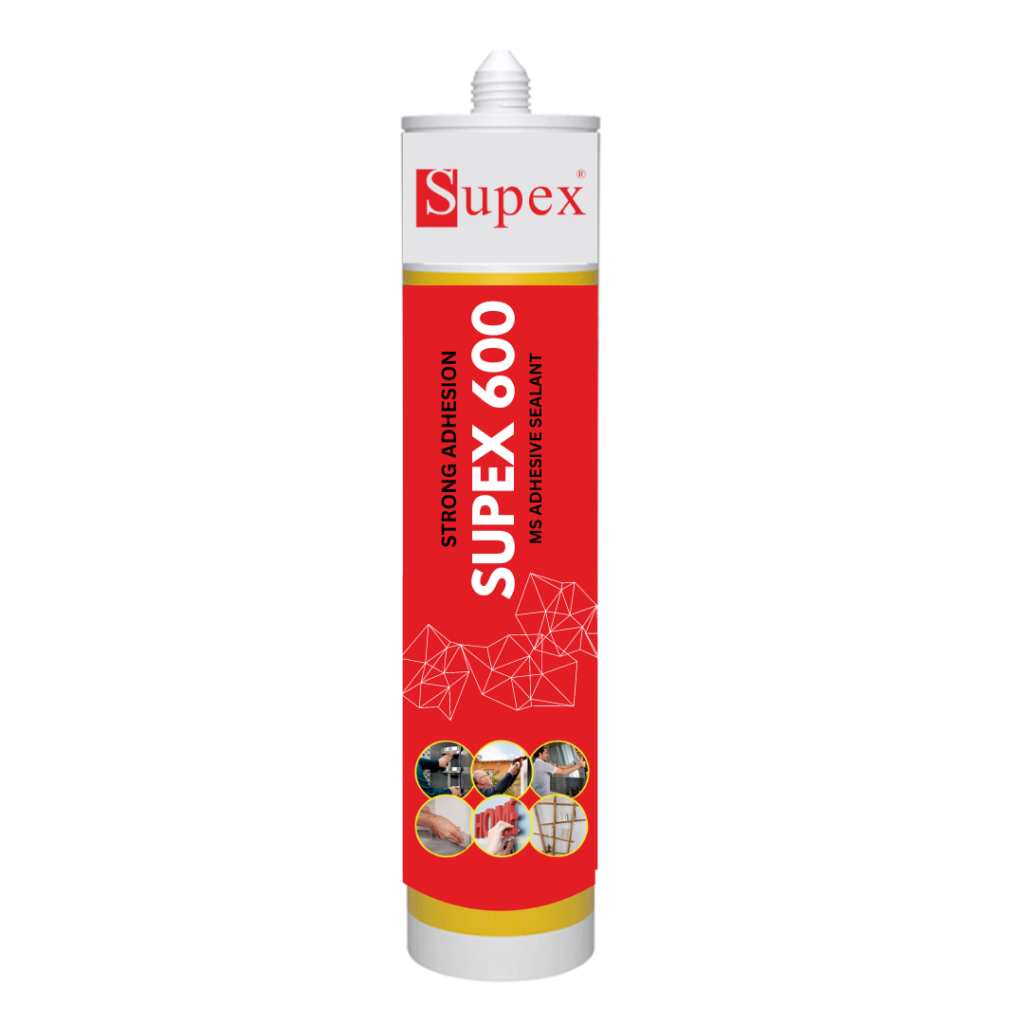
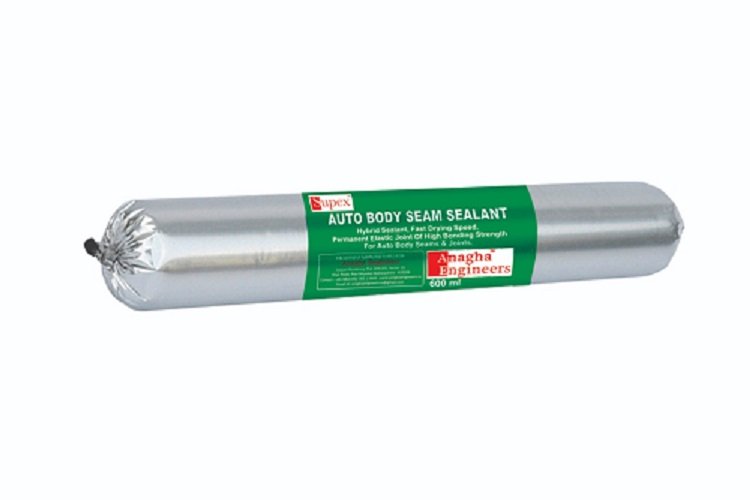
Joint Sealants Terminology- concrete sealer
ASTM C 920 is the standard specification followed across the world for elastomeric joint sealants. Put together by American Society for Testing and Materials (ASTM); it is made up of several ASTM test methods including
- Movement capability (ASTM C 719)
- Sealant hardness (ASTM C 661)
- Tack free time (ASTM C 679)
- Adhesion in Peel (ASTM C 794)
Movement Capability – ASTM C 719 It is a standard designed test to measure the degree of cyclic movement (extension [+] and compression [-]) that a sealant can undergo in stimulated weathering conditions. Depending on the test results, sealants get further classified into the following movement classes
- +/-12.5% – write what class of sealants come in this range.
- +/- 25%
- +/- 35%
- +/- 50%
- +/-100/50%
Sealant Hardness – ASTM C 661 It is the standardized test to measure a sealant’s ability to resist the penetration by a Durometer probe. The rating scale for the test ranges from 0 to 100, with the lower rating meaning that the material is more softer. The less hard the sealant, the more movement it can accommodate.
In the same fashion, the higher the number, the harder the sealant is, and the less movement it can take.
Stress Relaxation It is the standardized test to check if the sealant can absorb extension without sustaining additional stress on the substrate’s bond line. Sealants which are can recover quickly and entirely from deformation report lesser stress relaxation numbers than those that recover slowly.
Modulus Sealants with low modulus index indicate that they create low stress at the sealant bond line. It is usually associated with a higher movement capability.
Medium Modulus sealants are typically used for general purposes and are applicable for the majority of elastomeric sealant applications. High Modulus sealants generally are not used for moving joints. Preferably, they can be in glazing applications.
What is a sealant used for?
Joint Sealants are used in construction to prevent fluids and other substances from passing through material surfaces, joints, or openings. They can also prevent the passage of air, sound, dust, insects, and so on, as well as acting as a firestopping component.
What is the difference between adhesive and sealant?
How Do I Stop the Sealant from Failing?
According to the experts, sealants often cause around 90% of the problems, although they only account for 10% of the cost of a building project. Why?
Well sometimes sealants can fail. This can be due to issues with adhesives, cohesive or substrates. In simple terms, the bond between the sealant and substrate can fail, thus the substrate can break or the sealant can tear.These problems usually occur because of one or two errors. If you did not prepare the substrate effectively, or if you select the wrong product, the entire thing can fall apart. So before you choose a product, you should consider how you will use it.


